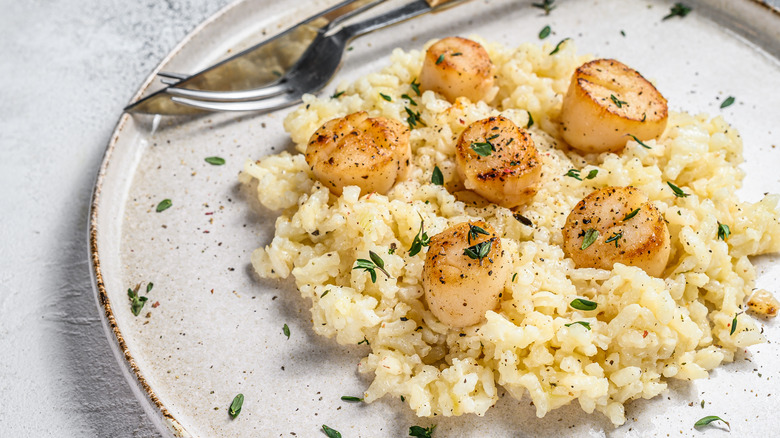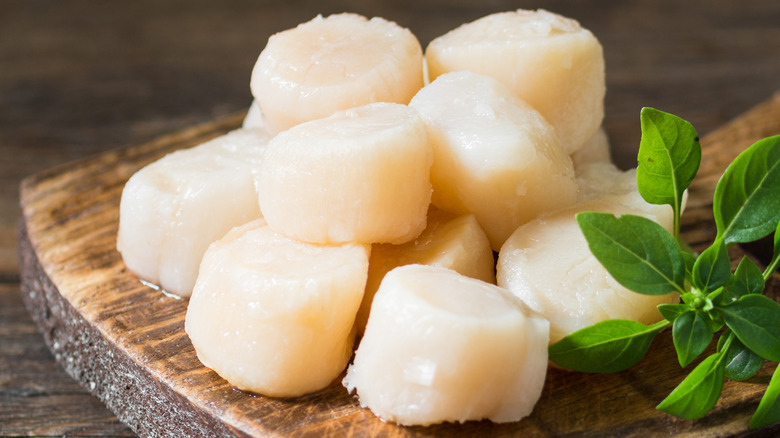The Important Tip To Remember Before Cooking Scallops At Home
Have you ever noticed the little crescent-shaped nugget attached to the side of scallops? If you take a careful look, you'll notice many scallops have the main disk of meat as well as a little bump of muscle called the "side muscle" sticking out. Not every scallop makes it to the store with that side muscle still attached, but they are easy to spot when present and it's important to remember to remove them before cooking. Although the side muscle is safe to eat, the heat of cooking makes it especially hard and unpleasant to taste.
The side muscle is the ocean equivalent of gristle on a steak — so much tougher and chewier than the main scallop muscle. Removing them is easy work that's well worth the result. You'll thank us for the tip when every mouthful of your sautéed scallop is tender and succulent without any rubbery texture.
You can make use of the side muscle
When preparing your scallops for cooking, pat them dry and gently examine for that opaque bump on the side. The side muscle is easy to identify because it is tough when pinched and the grain of the meat will run perpendicular to the rest of the scallop. Simply tug gently at the little bump and it will peel away smoothly.
Although the side muscles are not great eating as is, you can still take advantage of their flavor. Make a quick scallop broth by simmering the reserved muscle scraps in just enough water to cover for 10 minutes. Add any bits of onion or celery you have on hand if you'd like to add more flavor. Then, strain the broth and use it as the base for a sauce for the scallops or to add rich flavor to seafood risotto, couscous, or rice pilaf.

